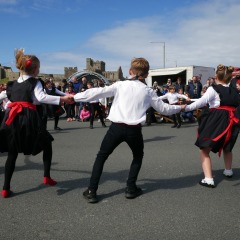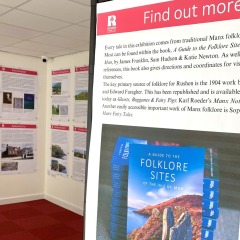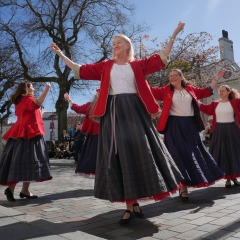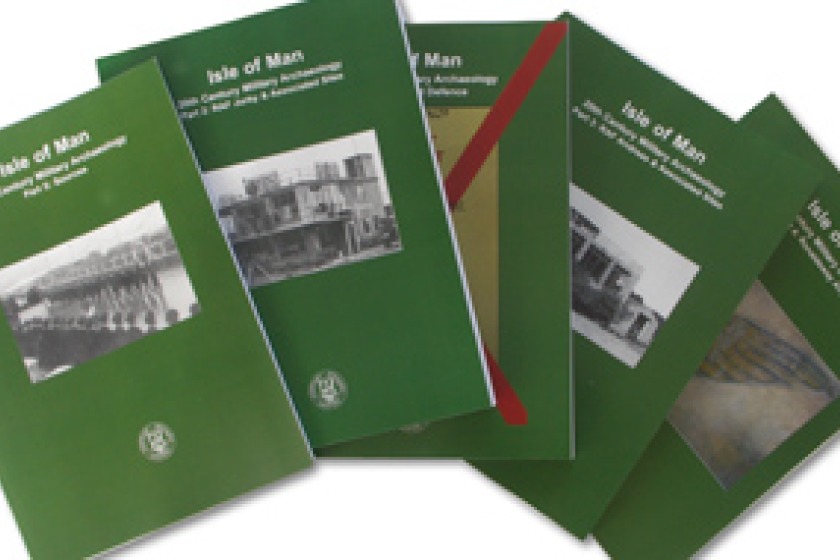20th Century Military Archaeology of the Isle of Man
Wed, 07 Feb 2007
A remarkable collection of reports has just been issued by the Manx Heritage Foundation which chronicles the history of the Island's military buildings during the 20th century.As a result of the two world wars, thousands of structures were built for purposes of defence, for monitoring enemy activity, and for training seamen, pilots and army personnel. The Isle of Man saw the construction of three airports, countless pill boxes, radar stations, gun ranges and numerous secret military installations. Many of these buildings still exist in the Island's towns and countryside. Some are in good condition, but others are becoming dilapidated and their original purpose is often obscure.
The reports have been commissioned from Paul Francis, one of Britain's leading experts on military archaeology, and as part of the survey he has visited and recorded every remaining structure all of which he has photographed and itemised. In addition to this he has supplied information on the other buildings that would have been in locations such as Jurby and Ronaldsway, but which have since been demolished.
As well as this cataloguing of the buildings, Paul explains how they were used and draws on first hand accounts of service men and women who were stationed on the Island, some of who kept diaries which provide fascinating insights into the war years on the Island. The reports are lavishly illustrated with photographs, plans, maps and drawings.
Of particular interest is the set of early photographs of Ronaldsway Airport taken during World War II. These have been supplied by the Fleet Air Arm Museum in Somerset and are a unique record of a wartime aerodrome, featuring the interiors of Nissen Huts, the buildings on what is now the Janet's Corner Estate, the home grown entertainment of the cadets and remarkable aerial photographs of Ronaldsway and Castletown.
The Foundation's Administrator, Charles Guard, said 'the Foundation considered it very important that these buildings were recorded for posterity. They were part of a remarkable period of the Island's history, when thousands of military personnel were stationed here, and hundreds of buildings were built and fitted with the latest electronic equipment in a matter of months. The Island is particularly rich in these remains, and places like Jurby, with its original hangers, bomb store and pill boxes, are amongst the finest WWII aerodromes in the British Isles. We feel that quite a few of the buildings are important enough to be registered, and these comprehensive reports, which have taken three years to produce, will go some way to helping that process'.
The books are on sale individually in local shops. Volumes 1-4 are priced at £15.00, and volume 5, which is a list of newspaper sources, is priced at £5.00.
More information: Military Archaeology of the Isle of Man
Recent News
-

Funding for creative Manx language projects announced
Tue, 24 Jun 2025
-

Year of the Manx Language - Gow ayrn, join in!
Tue, 17 Jun 2025
-

Commitment to Manx Culture through Corporate Support
Thu, 05 Jun 2025
-

School celebrated in new Manx film
Wed, 14 May 2025
-

Rushen Folklore Exhibition
Tue, 13 May 2025
-

Manx music in America: This Fair Isle
Thu, 08 May 2025
-

Island Escapes donates £ 5,000 to support Manx Culture
Thu, 01 May 2025
-

Jacob O'Sullivan joins the board
Thu, 24 Apr 2025
-

Folklore Comes to Life Through Puppetry Course
Thu, 17 Apr 2025
-

Manx 'father' of North American
Tue, 01 Apr 2025

